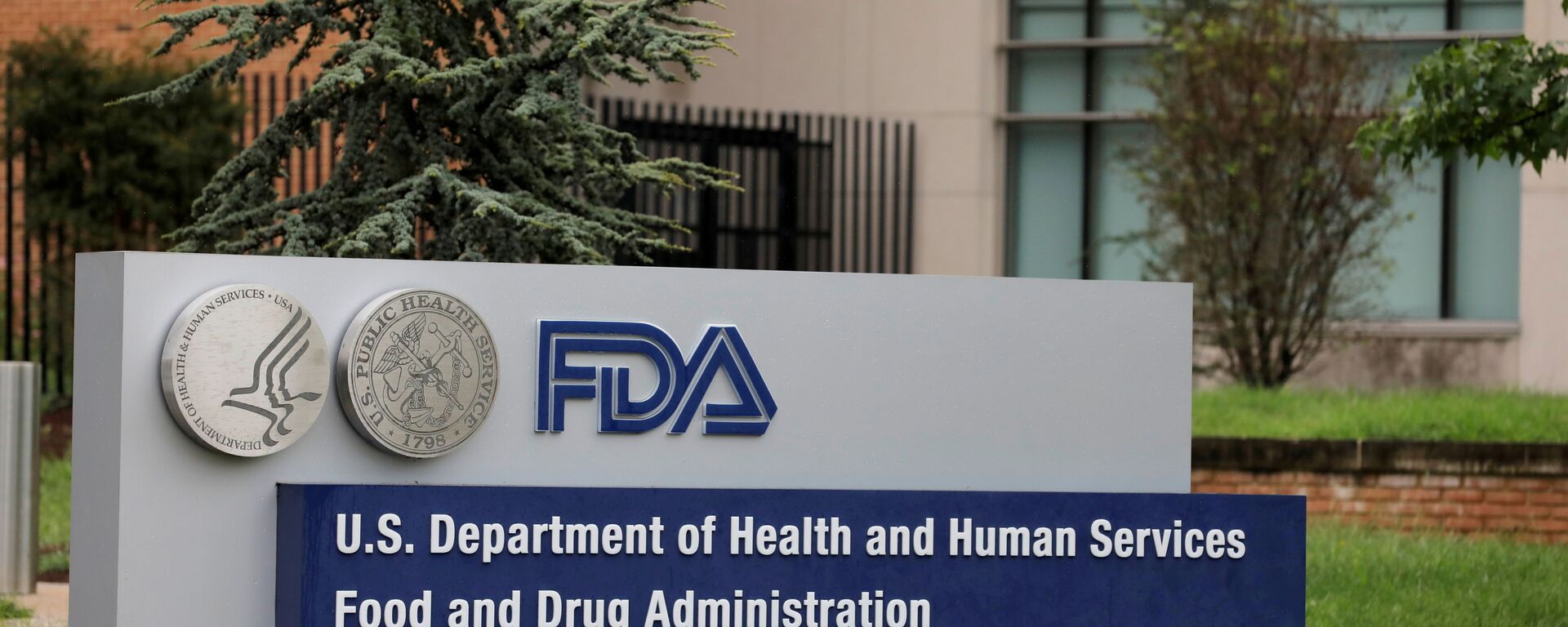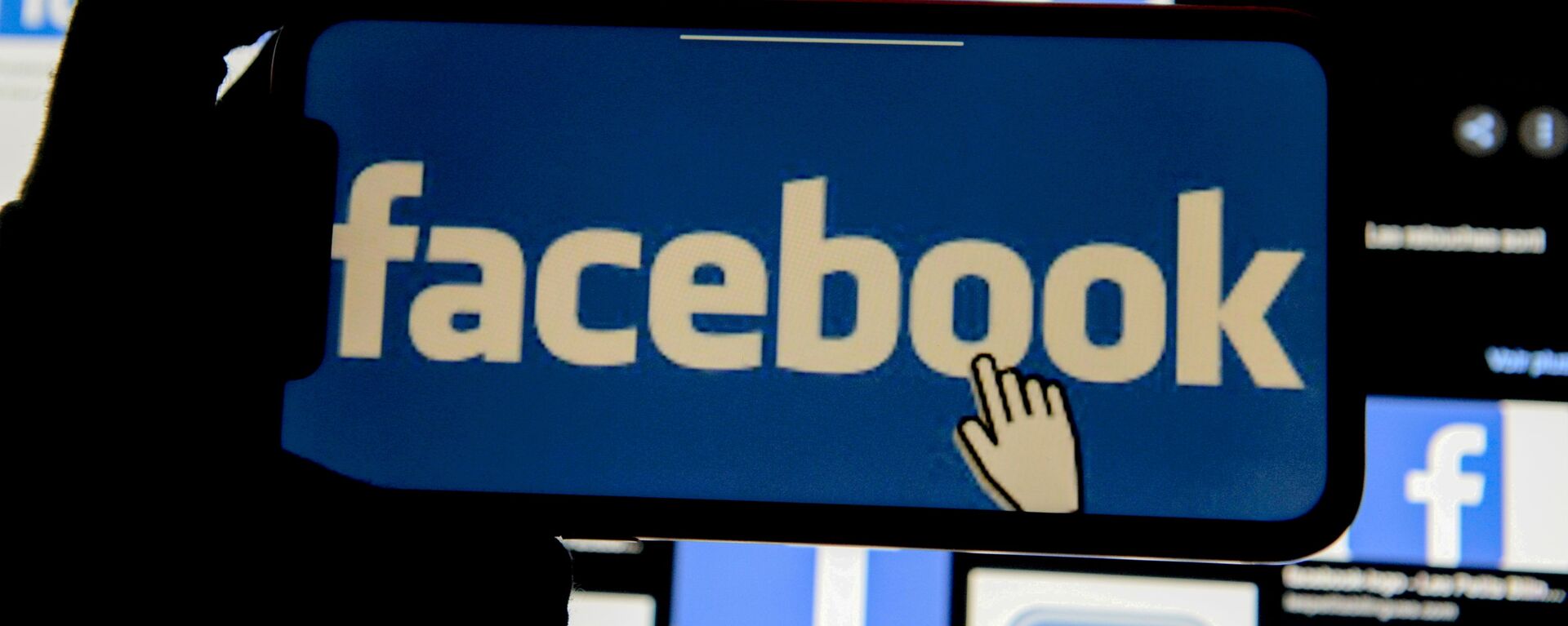Variants & Vaccines: How the US Tackled Its COVID Spread in 2021

© REUTERS / DADO RUVIC
Subscribe
As 2021 comes to an end, the United States and much of the world remains gripped by the coronavirus pandemic. This is the story of 2021 as told through the effects of COVID on the United States.
How it started: Getting to 1 January 2021
The United States ushered in 2021 amidst lockdowns and a world completely foreign to that known 365 days prior. The term "social distancing" was reserved for introverts, masks were worn on Halloween, and only curious toddlers and Hollywood horror movie makeup artists stuck items resembling cotton swabs up their noses.
COVID-19 was first reported by the World Health Organisation on 9 January 2020, in Wuhan, China, but this wasn't the first time a mysterious viral outbreak had cropped up in East Asia only to never reach American shores.
The very first case in the United States was reported on 21 January 2020, but even then it did not register in the American consciousness that it was a threat. Over the next few weeks, the situation in Wuhan deteriorated, prompting the Chinese government to shut down a city of over 8 million people.
On 3 March, US President Donald Trump declared a national emergency, and over the next month states imposed lockdowns to help curtail the spread of COVID. The next nine months saw the United States struggle to effectively contain the spread of the disease.
By the end of the year, it was estimated that 385,000 people had died from COVID.
2020 was an election year and there is ample evidence that Trump's handling of the pandemic played a role in him losing the White House. While his "Operation Warp Speed" saw the unprecedented rapid development of vaccines, they only became available after election day.
According to polling data from FiveThirtyEight, the public perception of Trump's handling of the pandemic went from somewhat positive to mostly negative as soon as cases started showing up in the United States.
By the end of May, when the US had passed the 100,000 death mark, 53.6% of Americans disapproved of Trump's handling of the pandemic. Heading into election day, Trump's handling of the pandemic had a disapproval rating of 57.2%.
Democratic candidate Joe Biden defeated Trump in the 2020 presidential election. His 8 million vote lead in the popular vote obscured the fact that he won Arizona, Georgia, and Wisconsin by less than 45,000 combined votes. The coronavirus pandemic upended 2020, and according to some, it helped hand Biden the presidency.

This combination of pictures created on September 29, 2020 shows US President Donald Trump (L) and Democratic Presidential candidate former Vice President Joe Biden squaring off during the first presidential debate at the Case Western Reserve University and Cleveland Clinic in Cleveland, Ohio on September 29, 2020.
© AFP 2023 / JIM WATSON
2021: The Year in COVID
If 2020 was a year ambushed by COVID, then 2021 was going to be the counteroffensive. Armed with vaccines, therapeutics, and a year's worth of knowledge, COVID wasn't going to stand a chance against the United States.
As in all great conflicts, the fog of war and an unpredictable enemy can foil even the best-laid plans. While America, and the world-at-large, attempted to restore normal, COVID had other plans.
This is 2021, the year in COVID as told through vaccines, the Biden administration's response, the conspiracies, and the variants.
The Year in COVID Vaccines
"Operation Warp Speed" saw the development of vaccines at an unprecedented rate. The plan was officially announced on 15 May 2020, and by 18 December 2020, the Food and Drug Administration (FDA) gave emergency use authorisation to Moderna's double-dose mRNA COVID vaccine.
Two months later, the FDA gave emergency use authorisation to Johnson & Johnson's non-replacing viral vector single-dose vaccine. In less than a year, the $18 billion endeavour had produced two vaccines that were ready for 2021.
However, Pfizer-BioNTech's COVID vaccine, which also utilised mRNA technology to combat the coronavirus, was actually the first COVID vaccine to gain emergency use authorisation from the FDA when it was approved on 11 December 2020. The early promise of the vaccine prompted the Trump administration to purchase 300 million doses of the vaccine.
Heading into 2021, the United States was armed with two COVID vaccines, with a third shortly on the way.
According to data collected by the Mayo Clinic, after 12 months of vaccination efforts, only 61.7% of Americans are presently fully vaccinated, with another 72.9% having received a single dose.
The goal to vaccinate every American has proved a struggle. In April of 2020, the US Department of Health and Human Services launched a nationwide campaign to improve access and encourage Americans to get vaccinated.
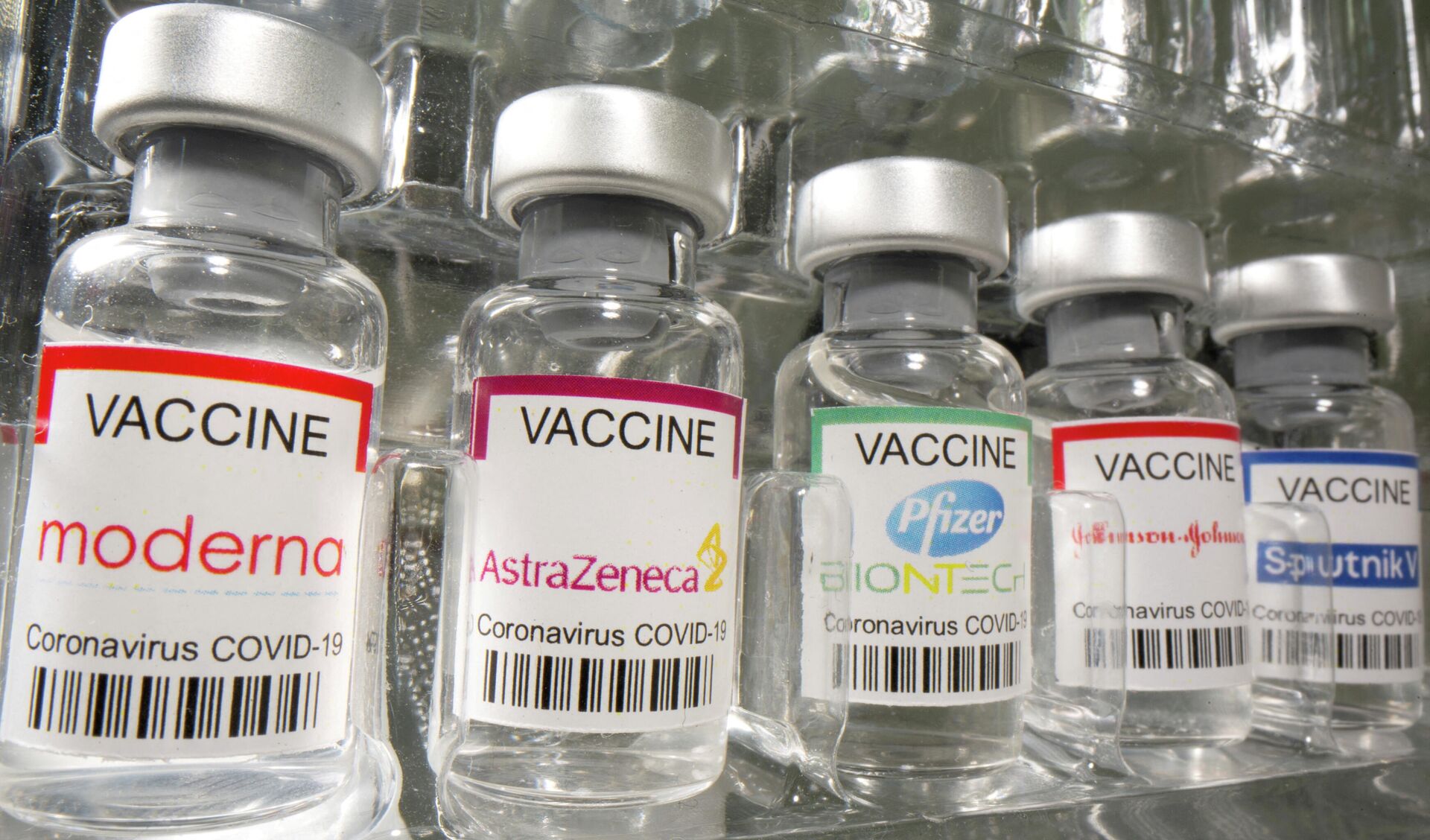
Vials labelled "Moderna, AstraZeneca, Pfizer - Biontech, Johnson&Johnson, Sputnik V coronavirus disease (COVID-19) vaccine
© REUTERS / DADO RUVIC
The multibillion-dollar campaign sought to use social media and a community-oriented focus to create grassroots momentum to increase vaccination rates. The campaign coincided with a slowdown in vaccination rates that peaked in February and began to trail off in March.
Older Americans, who have been shown to be more vulnerable to COVID, have a much higher vaccination rate than younger Americans. The correlation between age and COVID vaccination rate is consistent. Ninety percent of those between the ages of 65 and 74 are vaccinated, 78.2% of 50-64 year-olds are, 71.1% for 40-49, 62.8% for 25-39, 58.4% for 18-24, and 53% for 12-17.
The success of COVID vaccines, the Moderna and Pfizer examples particularly, in preventing COVID infection saw that as the months passed, a clear trend emerged that vaccines were losing some of their efficacy.
However, while the vaccines had lost some of their ability to prevent infection, they were still effective at preventing hospitalisation, serious illness, and death. The reality that the first round of COVID vaccines might not last prompted the development of COVID booster shots.
Over the summer, the US Centres for Disease Control and Prevention (CDC) began offering booster shots to immunocompromised individuals, and all adults six months after their final dose of their initial two-shot vaccination.
According to reports, the FDA plans to expand the eligibility of boosters to Americans 12 to 15 years old. It is also expected that the FDA will reduce the time between an individual's booster and final dose of the initial vaccine from six to five months because of the spread of the Omicron variant.
On December 22, the FDA issued an emergency use authorization for Pfizer's Paxlovid. The antiviral pills were shown to reduce the risk of hospitalisations and death in 88% of unvaccinated patients.
The following day, the FDA issued another emergency use authorization for an antiviral pill, Merck's molnupiravir. The pills have been shown to be less effective and have more health risks associated with them than Paxlovid, but there is a strong belief the pills will be more widely available in early 2022.
The two antiviral drugs give health care professionals another therapeutic to combat severe Covid cases.
The Year in COVID Variants
Variants have come to define COVID in 2021. The Delta variant was first detected in October of 2020, and alongside the Omicron variant, first discovered in November of 2021, both became dominant strains in 2021.
The Delta variant took its time to make it to the United States - first discovered in India in October 2020, it wasn't until May 2021 that it was first detected in the US. The variant was found to be 97% more transmissible, cause hospitalisation in 85% more patients, and have a 137% higher mortality rate. Compared to previous variants, Delta was a triple threat.
Available vaccines are still highly effective against the Delta variant, although not as effective as they were against the Alpha variant. By July, the Delta variant had become the dominant strain in the United States, setting off another deadly surge.
Starting in mid-July, COVID deaths in the United States began to climb from around 200 a day - a low for 2021 - to nearly 2,000 deaths a day by mid-September. The death totals from the Delta variant were lower than those from January, but they represented the largest death totals since vaccinations became widely available.
COVID cases began to taper off through November and into early December. The improving situation had Americans dreaming of a holiday season unencumbered by the virus, but those dreams were dashed by the Omicron variant.
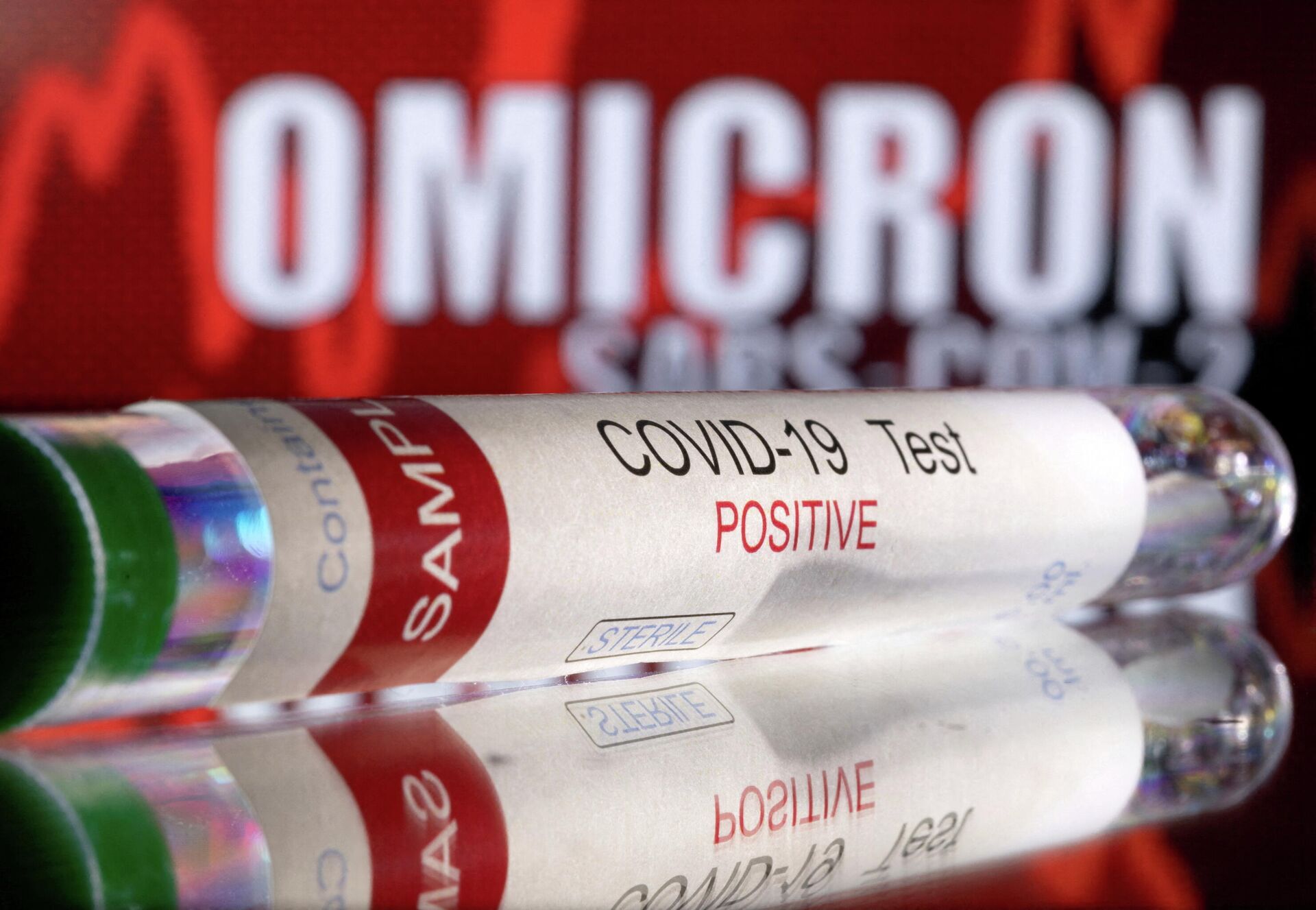
A test tube labelled "COVID-19 Test Positive" is seen in front of displayed words "OMICRON SARS-COV-2" in this illustration taken December 11, 2021
© REUTERS / DADO RUVIC
Detected in South Africa at the end of November, the emergence of the Omicron variant prompted governments around the world to limit travel with several southern African nations - a move too little, too late.
Omicron would be first identified in the US on 1 December, and in a matter of weeks would overtake the Delta variant as the dominant strain in the country. By 20 December, Omicron accounted for nearly three-fourths of all COVID cases.
The rapid spread of Omicron is explained by its higher transmission rate than any other COVID variant and the observation that current COVID vaccines are less effective against preventing infection. Behavioural factors, including a stubborn refusal by many Americans to engage in preventative health care practices, have also contributed to Omicron's success.
Due to the success of vaccines and an easing of restrictions, many Americans began to behave as they did in the pre-COVID world, allowing lax attitudes to encourage the further spread of the respiratory disease.
While Omicron has been shown to be more transmissible than the Delta variant, it is also believed to be less deadly. Early research estimates that it leads to 41% fewer hospitalisations than Delta.
There is still much that is unknown about Omicron, however, its perceived lessened severity does not make it less dangerous than the Delta variant. A virus that spreads twice as much, but is half as deadly, still leads to more deaths, particularly among those who refuse the vaccine.
The Year in the Biden Administration's Response
US President Joe Biden took office on 20 January 2021 as the pandemic was at its deadliest, and effectively defined the early part of his presidency by his administration's response to the pandemic.
Early returns on the Biden White House's efforts soon proved promising as COVID death rates began to fall, a trend that would continue into the summer months. The availability of vaccines provided his administration with the tools necessary to tackle the pandemic, and policy decisions were crucial to the response.
Over his first 100 days in office, Biden signed 15 executive actions related to the pandemic. Of the 15 measures, only two were reversals of Trump administration policy. The creation of the COVID-19 Response Coordinator, COVID-19 Health Equity Task Force, and the Pandemic Testing Board are among those actions.

U.S. President Joe Biden meets with members of the White House COVID-19 Response Team on the latest developments related to the Omicron variant in the Roosevelt Room in the White House in Washington, U.S., December 16, 2021.
© REUTERS / EVELYN HOCKSTEIN
The administration mandated that masks be worn in airports and on most forms of transportation. At one point, officials launched the "100 Days Masking Challenge" and ordered that federal employees - including government contractors - wear masks and adhere to social distancing measures in federal buildings and on federal lands.
The year also saw Biden reverse a Trump-era move by rejoining the World Health Organisation, the health agency that his predecessor withdrew the nation from over accusations that it had protected China before the world learned of SARS-CoV-2, the virus that causes COVID-19.
One of the key policy points of the Biden administration was to provide schools with the necessary resources to open safely after various institutions switched to remote learning plans. With vaccine approvals for children on the horizon, the administration aimed to provide US states with enough resources to keep staff and children safe and upgrade buildings previously designed without social distancing in mind.
As the nature of the pandemic shifted, the administration adjusted its rhetoric and policies. With COVID cases subsiding significantly in early spring and into the summer, the administration focused on other goals, while still pushing for all Americans to get vaccinated.
Yet, as the Delta variant surged in August and September, Biden began to issue executive actions to combat the rising case counts. On 9 September, he signed two executive orders, one pertaining to federal contractors and one for employees.
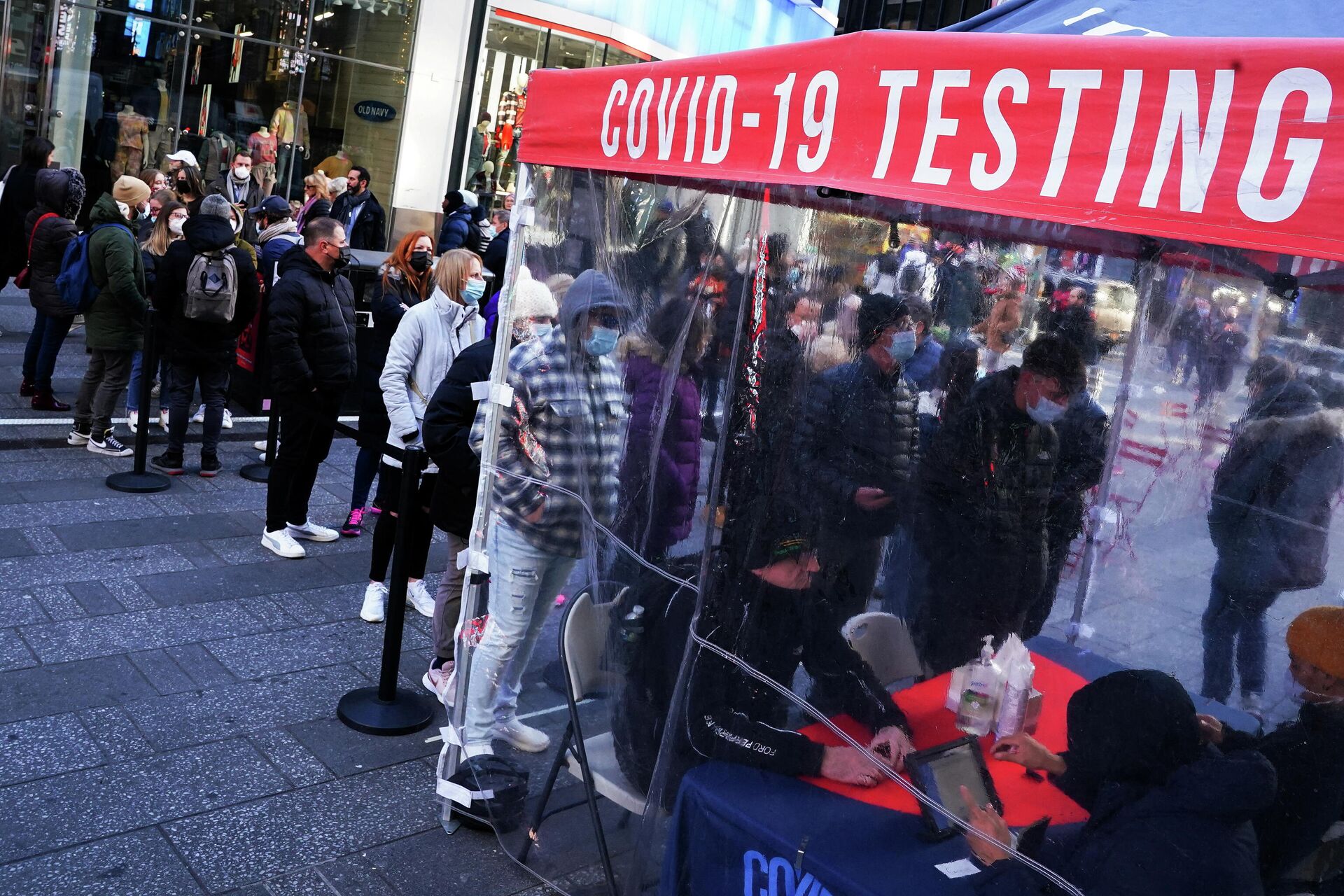
People queue for a coronavirus disease (COVID-19) test in Times Square during the COVID-19 pandemic in the Manhattan borough of New York City, New York, U.S., December 13, 2021
© REUTERS / CARLO ALLEGRI
His executive mandate requiring federal employees to be vaccinated led to pushback, especially as most federal employees had been in a position to get a COVID vaccine over the previous nine months.
With the realisation that COVID vaccines lose efficacy over time, the administration soon turned to boosters. Early debates were over the need for boosters, but the administration ultimately decided that all vaccinated Americans would be allowed to receive a booster shot six months after their final COVID shot.
The Biden administration doubled down on efforts to make vaccines available for all Americans, going so far as making them free to underserved and remote communities. Local organisers were also mobilised to push vaccine efforts throughout the nation.
Many states have followed the administration's lead and pushed for vaccinations, but others have questioned the need for vaccines and health mandates such as mask-wearing and social distancing. The administration's power to achieve its goals was ultimately in the hands of Americans themselves. Thus far, 71% of Americans have at least gotten a single shot, but the other 29% have proven to be difficult to find a breakthrough.
The Year in COVID 'Infodemic'
Vaccine hesitancy and the embrace by some extremists of coronavirus conspiracies have been a consistent thread of the pandemic. From the onset of the pandemic, conspiracies have followed over the origin of the virus, the most notable claiming that it was developed in a Wuhan lab.
An Annenberg Public Policy Centre poll found that 31% of Americans believed the Chinese government created the coronavirus as a biological weapon, 8% in the poll improbably believe "the vaccine against COVID-19 being developed with support by Microsoft founder Bill Gates contains microchips that can track the person who has been vaccinated", and 27% of Americans believe the CDC exaggerated the danger posed by COVID as a means of mitigating the Trump presidency.
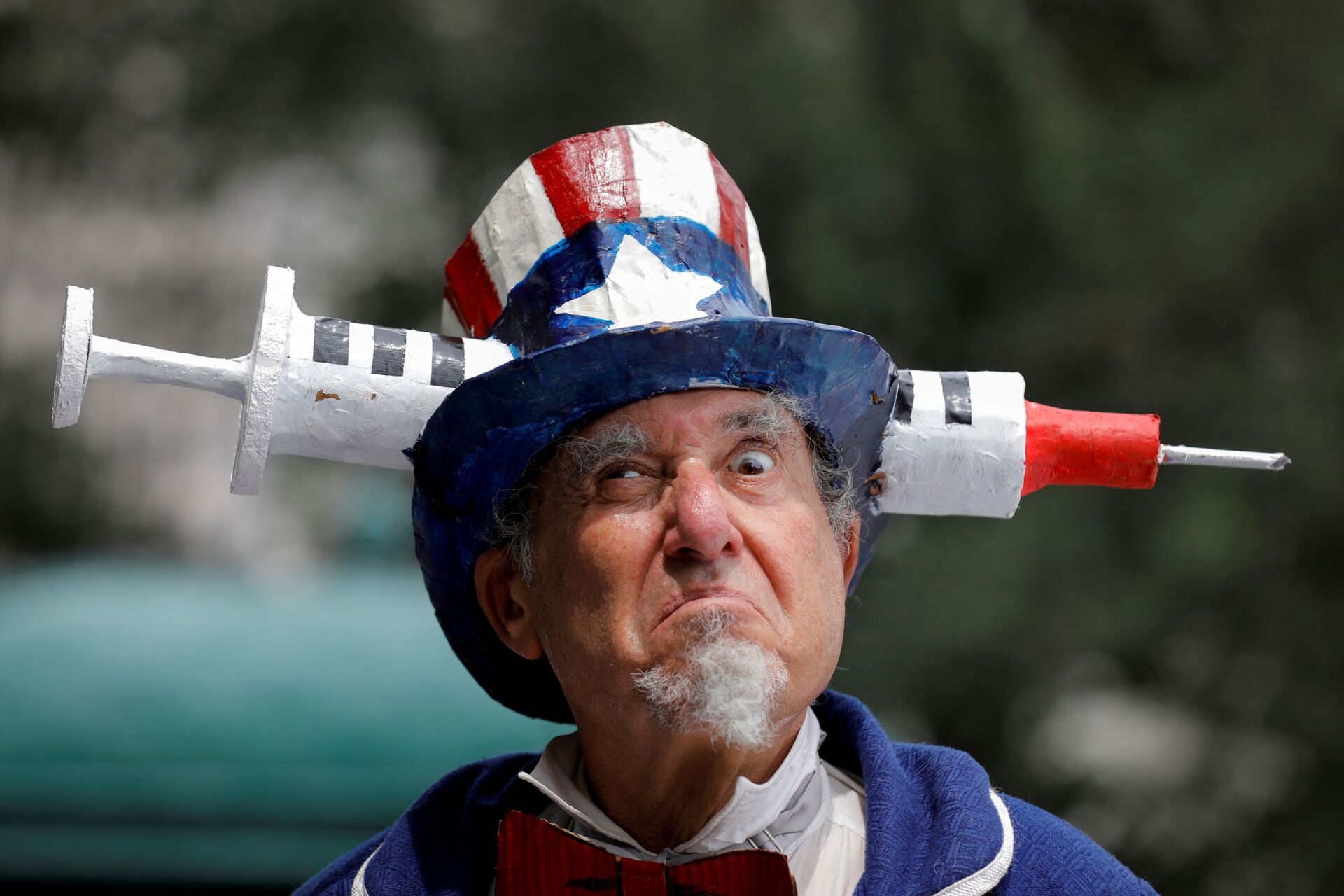
A person dressed as Uncle Sam attends an anti-mandatory coronavirus disease (COVID-19) vaccine protest in New York.
© REUTERS / Andrew Kelly
As the pandemic has evolved, so have conspiracies. As therapeutics and vaccines are developed, conspiracies shift away from the origin of COVID and now tend to focus on the tools designed to combat the pandemic.
Conspiracy theories have pushed some Americans to reject vaccines, but that portion of the population remains small.
That same Annenberg poll found that 22% of Americans participating in the survey were not sure if the Chinese government created the coronavirus as a biological weapon, 13% were not sure if "the vaccine against COVID-19 being developed with support by Microsoft founder Bill Gates contains microchips that can track the person who has been vaccinated", and 14% of Americans were not sure if the CDC exaggerated the danger posed by COVID to harm the Trump presidency.
A study conducted by the National Centre for Biotechnical Information, found that exposure to COVID misinformation correlated to vaccine hesitancy.
The White House has appealed to large social media platforms, such as Twitter, Facebook and Instagram, to reign in vaccine misinformation. In March, a Center for Countering Digital Hate study found that close to two-thirds of all vaccine misinformation came from 12 accounts.
The study was often cited by officials in the Biden Administration to highlight how social media platforms had failed to protect the public. In July, President Joe Biden held platforms like Facebook for the surge in Covid deaths.
"They're killing people -- I mean they're really, look, the only pandemic we have is among the unvaccinated," Biden said at the time.
However, Biden would walk back the claim a few days later, saying, "Facebook isn't killing people -- these 12 people are out there giving misinformation. Anyone listening to it is getting hurt by it. It's killing people. It's bad information."
He added, "My hope is that Facebook, instead of taking it personally, that somehow I'm saying Facebook is killing people, that they would do something about the misinformation, the outrageous misinformation about the vaccine. That's what I meant."
The back and forth between the government and social media platforms has led to some small changes and accounts being banned. Unfortunately, studies indicate that misinformation travels faster than truth on social media platforms. Without proactive interventions by social media platforms, misinformation, much like Covid, has largely stayed one step ahead.
The Year COVID Death Toll Surpassed 800,000
Entering 2021, there had been at least 364,000 deaths due to COVID in the United States. On 15 February, death totals reached 500,000. On 16 June, the 600,000 mark was reached and 29 September saw 700,000. By 15 December, the 800,000 mark was passed.
As of 22 December, there have been in total at least 809,300 deaths from COVID. There were 31.3 million confirmed coronavirus cases in the US in 2021, compared to 20.3 million cases in 2020. However, the chances of survival improved dramatically in 2021 compared to the year prior.
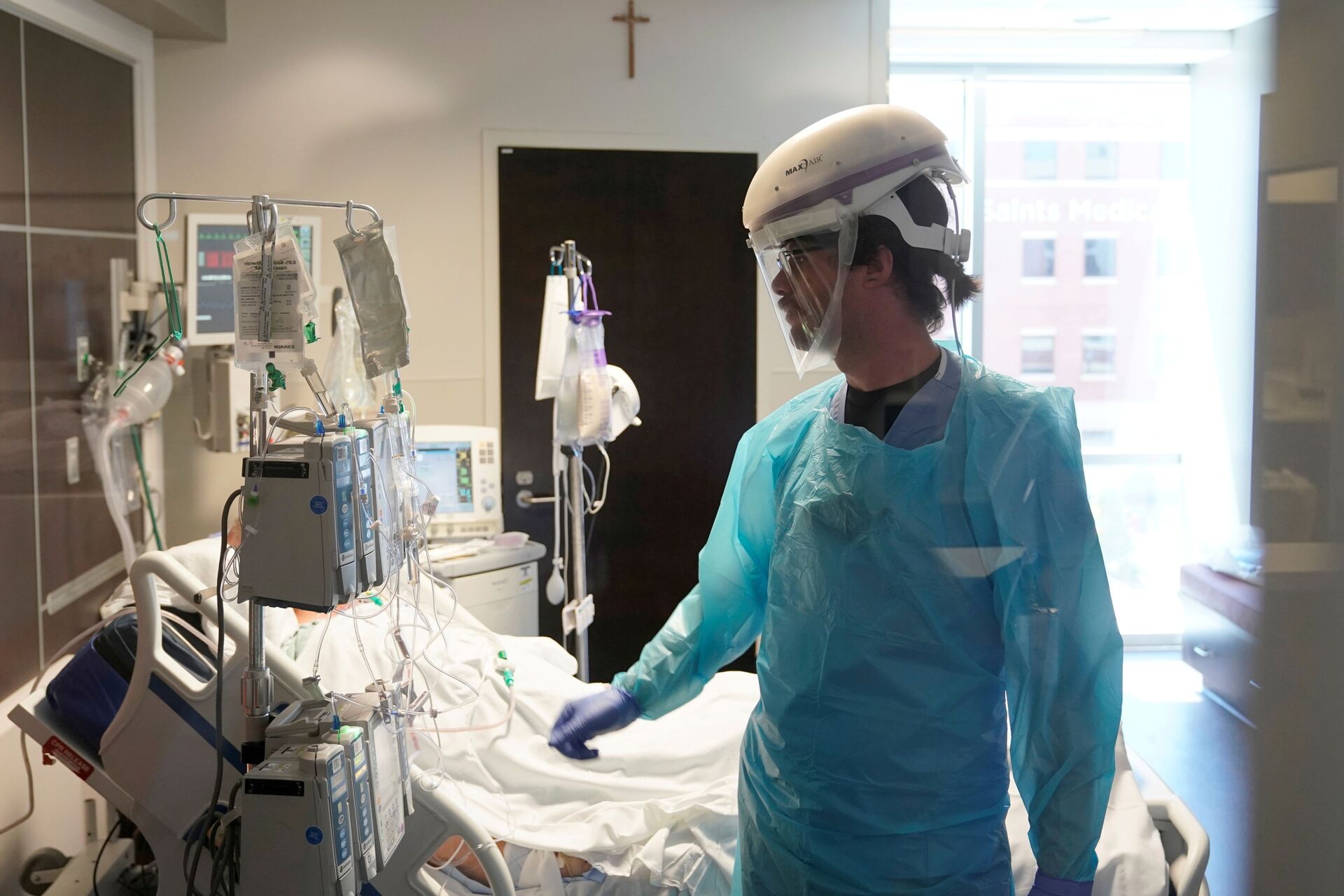
A nurse works in a COVID-19 patient's room during a tour of SSM Health St. Anthony Hospital's intensive care unit (ICU) amid the coronavirus disease (COVID-19) pandemic in Oklahoma City, Oklahoma, U.S., August 24, 2021. REUTERS/Nick Oxford
© REUTERS / NICK OXFORD
Statistics showed that before 2021, every 55.8 confirmed cases would lead to death, whereas in 2021 every 115.9 cases led to a fatality. Increased testing, vaccinations, and therapeutics have vastly improved Americans' chances of surviving COVID as researchers have learned more about the virus.
An estimated 236 million Americans have received a single dose of the coronavirus vaccine, 203.1 million are fully vaccinated, and an additional 64.3 million received boosters in 2021.
The United States weathered multiple COVID surges in 2021, with another underway. Although 2021 was thought by some to be the year that the United States and the world would beat COVID, that has yet to be the case.
Two new variants and the waning efficacy of vaccines have given COVID the chance to undo many gains. The government response since the pandemic's inception has - until recently - not fully unified, allowing a disease that does not know borders to run rampant.
2021 has proven to be the year America learned that the coronavirus would take more than a few jabs to overcome the pandemic.
As the calendar flips to 2022, the US will face a situation similar to where it was a year ago. With improved therapeutics, the proliferation of boosters, and improved outreach, there's a chance that 2022 could be the year things settle down into a new normal.
